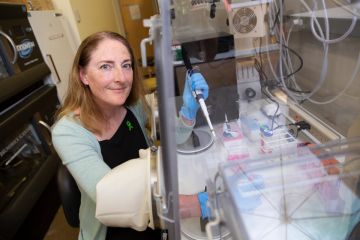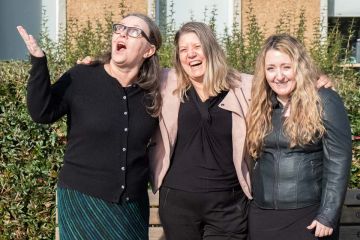Graphic novels shake up representations of the Holocaust
- Stephanie Harrington
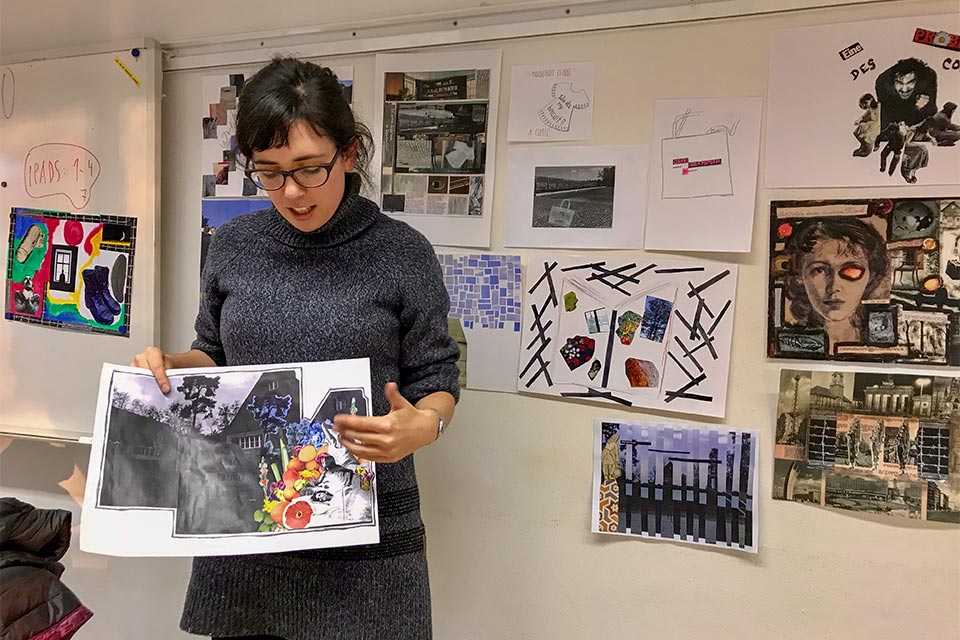
Graduate student Paige Thombs believes in the power of graphic novels—to teach as well as entertain. A long-time fan of the medium, Thombs had the opportunity to travel to Germany in November to attend an international seminar on visual storytelling held at a former Nazi concentration camp for women.
“I have long believed graphic novels are an amazing way to educate people,” Thombs says. “What I love about them is you can get somebody interested in a topic that someone previously had no interest in.”
UVic Germanic and Slavic Studies professor Charlotte Schallié co-organized the event, which brought a team of Holocaust scholars, graduate students and visual artists from Canada, France, Greece, Germany and Israel together to examine how graphic novels can be used for Holocaust education.
Concentration camp for women
The event took place at Ravensbrück Memorial, 90 km north of Berlin. Some 130,000 women passed through the gates of the former all-female concentration camp from 1939 to 1945, including those the Nazis deemed to be “deviant women” such as communists and members of the Resistance.
“It was extremely meaningful for us to go to this place because it brought out a lot of tensions and anxieties,” Schallié says.
At Ravensbrück, the group, which included five UVic graduate students and staff members, stayed at the SS guards’ former sleeping quarters, since converted into a hostel. They were also given access to Ravensbrück prisoners’ artwork, which the group used to inform their discussions on Holocaust education. German illustrators Tine Fetz and Sophia-Louise Hirsch gave insight into developing graphic novels and guided participants in creating their own collages.
Uncomfortable but profound discussion
Schallié says her goal was to bring students from very different disciplines and backgrounds together, an experience she says was challenging at times.
“What was remarkable about it was no one held back. People were honest and genuine even though it was uncomfortable for them,” she says.
Thombs, who is completing a MA in history and cultural, social and political thought, previously attended UVic’s EU summer field school—examining migration, the refugee crisis and the memorialization of the Holocaust with Schallié—and said the experience was exhausting but rewarding.
“It was quite profound to get to the point where we could find commonalities and understand difference,” she says.
Art makes powerful statement
History alumna and UVic researcher Kaitlin Findlay, who created a collage that imagined the life of one of the female guards, found the examples of prisoners’ artwork most moving.
“Working closely to that art was really powerful,” she says. “Everyone was very excited about graphic novels as a way to shake up representation of the Holocaust.”
Schallié hopes to expand the initiative into an international project that will use graphic novels to teach high school students about the Holocaust.
Photos
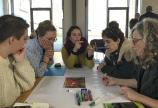
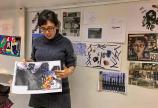
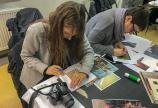
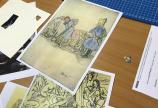
In this story
Keywords: art, history, international, racism, war
People: Charlotte Schallié, Paige Thombs, Kaitlin Findlay
Publication: The Ring

